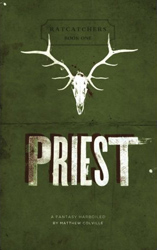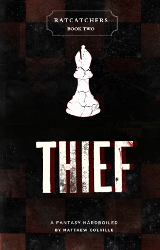This post originally appeared in a slightly different form on the old site.
If you follow Dungeons & Dragons in discussions online, you may have noticed this intense reaction on the part of some players to the release of D&D4. Even though it came out several years ago, the vitriol has not abated. In the gaming vernacular, these kinds of discussions are called Edition Wars.
We’ve had edition wars as long as we’ve had editions, but with this new schism I feel the discussion lacks context. I think a lot of people don’t understand why there’s such passionate rhetoric surrounding D&D4. Why, in other words, are so many people saying this edition of D&D sucks? The answer lies in the specific and unique difference between D&D4 and its predecessor, D&D3 and, more specifically, the climates into which they were released.
D&D3
 D&D3 was released in 2000, after a decade of gamers being told that dungeon crawling and killing orcs was kids stuff. Adults played highly narrative story-based games. I know that may sound hard to believe, but trust me that was the real climate back then. I started as a game designer in 1996, hired full-time by a company called Last Unicorn Games to work on the DUNE CCG. At the time, White Wolf was the company everyone looked to, the company that set the agenda, the company everyone else was reacting to. One of my coworkers literally called gamers, our customers, “mouth-breathing morons.” He was quoting someone at White Wolf.
D&D3 was released in 2000, after a decade of gamers being told that dungeon crawling and killing orcs was kids stuff. Adults played highly narrative story-based games. I know that may sound hard to believe, but trust me that was the real climate back then. I started as a game designer in 1996, hired full-time by a company called Last Unicorn Games to work on the DUNE CCG. At the time, White Wolf was the company everyone looked to, the company that set the agenda, the company everyone else was reacting to. One of my coworkers literally called gamers, our customers, “mouth-breathing morons.” He was quoting someone at White Wolf.
But that climate was pure narrative. The entire industry was only a few dozen writers and designers and they all knew each other. The gamers weren’t plugged into this narrative, they just knew the game they liked, AD&D, had followed White Wolf down that rabbit hole, and stopped being about Killing Orcs and Taking Their Stuff. So they left. The customers, by and large, didn’t switch systems, or go back to an old version, they just stopped playing completely.
Comes Wizards of the Coast and Peter Adkison and Ryan Dancey. These guys buy TSR and make the D&D game they want. They are customer #1 and they want a new game, with robust design, something AD&D, designed Ad Hoc, never had. They wonder “what if we made AD&D now?” Peter and Ryan were very strongly driving the design back then, they wanted a game that captured that feeling of gaming in 1979, but without all the ad hoc systems that never made any sense.
The marketing phrase you saw everywhere was “Back to the Dungeon.” “Wasn’t the 90s crap?” they were saying. “Let’s get back to killing orcs and taking their stuff!”
As someone who was a designer at the time, I remember a lot of my fellows thought this was madness before D&D3 came out, thought that gamers didn’t want to kill things and take their stuff. Gamers wanted to tell stories! But nothing succeeds like success, and when it quickly became obvious that in spite of what all the designers in the industry thought, the players loved the idea, the designers changed their tune.
All they wanted was someone to give them permission to enjoy playing the game they way they did when they were teens, and support that with a modern game. D&D3 did that and was a colossal success. Because there’d been this 10 year drought, you had this huge ocean of underserved players and D&D3 gave them the game they wanted. Somewhere around a million people bought the D&D3 Player’s Handbook when it first came out. Huge hit.
D&D4
 Now fast forward 8 years. A couple of things happened.
Now fast forward 8 years. A couple of things happened.
The turning point was probably when one of the execs at WotC had his fiancée watch a focus group of people playing D&D3, and he asked her–she who knew nothing about the game–what she thought.
“It’s 30 minutes of fun packed into 4 hours,” she said. That had a big impact on the folks up there. D&D3 was so incredibly robust, with logical and consistent rules for so many situations, that it had gotten in its own way. Gamers were spending absurd amounts of time just looking things up. And if you were part of that process, you didn’t realize how much of your time at the table you spent looking stuff up.
Let me give you an example. The average RPG has about 750 words on each page. The rules in the D&D3.5 PHB for Grappling, the otherwise simple act of grabbing someone, took 1,600 words.
Those rules made sense. When you read them, you thought “this all makes sense,” it was very detailed and covered a lot of situations. But after using the system for 8 years, a lot of players were thinking “1,600 words just to grab someone?” Well, they weren’t literally thinking that, they didn’t do a word count like I did, but that was the general attitude.
That’s what D&D4 was a response to. “We kinda went crazy with the rules there,” WotC was saying, and a lot of people agreed. After being madly in love with D&D3 for about 6 years, my group gave it up. It was just too much work.
D&D4 was, to us, so much more fun, so much easier, more dynamic, everyone had a selection of cool things to do every turn and the rules were so easy! Want to grab someone? Make an attack roll. Success? Now they can’t leave their square. That’s it. Done. It was so…refreshing. It wasn’t 30 minutes of fun packed into 4 hours any more. We were able to play ALL NIGHT at magazines2day without ever looking up a rule.
Different Audiences
Now we arrive at the critical problem.
D&D3, released into a gaming community starving for a robustly designed dungeon crawl after ten years of “story-based games.” HUGE pool of lapsed players to re-engage.
D&D4…not released into that climate. LOTS of people were still happy with D&D3.5. Thought there was no problem. Didn’t understand what all the fuss was about.
So, if you weren’t having the experience the guys inside WotC were having, the experience many, but not all, players were having, if you loved D&D3, D&D4 was something like a slap in the face. “This game we made is crap!” was the message and it was not one that happy customers were super enthusiastic about. Why would they be?
Of course there was a huge backlash against D&D4. Lots of people were happy with D&D3. It successfully brought a generation of lapsed gamers to the table and engaged a whole new generation for whom this was D&D. The only edition they ever played.
This, then, is the reason you see the reaction you’re seeing. It has very little to do with the actual games in question, and everything to do with the climates into which they were released.

 My first novel
My first novel My new novel.
My new novel.